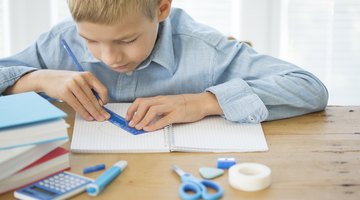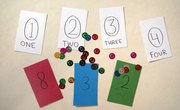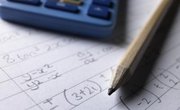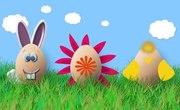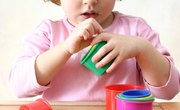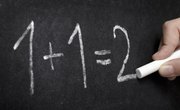Not every student learns in the same way. While some children learn visually, others are more verbal, auditory or physical. Students who are kinesthetic learners do best when they are able to get hands-on and move. If you have kinesthetic learners in your classroom, physical activities and games can engage them in the educational process and help them take math concepts off the paper and into their own hands.
Measure It
Twelve inches equals a foot. If this concept is a challenge for your physical learner to digest, get her up and moving with a simple measurement comparison game. Give the students -- all of them, and not just the kinesthetic learners -- rulers or tape measures. Have them get hands-on and measure different objects in the room, such as pencils, books or the desk tops. Compare the different measurements. Add to the activity as the students become more familiar with how many inches -- or feet -- each item is. Divide the class into teams and put items in front of them. Have them estimate the measurement based on their previous work. Whichever team gets closest wins.
Walk It Out
You can turn a simple measurement activity into a physical game. Have each child measure one of his feet with a ruler. Write down the measurement in inches. Ask the students to pace out selected distances walking toe-to-heel, without space in between each step.The distance may include a walk across the classroom or from the water fountain to the door. Multiply the numbers of steps times the child's foot length to get the distance in inches. Take the learning outside and have the students walk out larger measurements such as the football field or the length of the school's playground. Add another layer to the lesson and have the students convert their measurements into the metric system.
Counting Class
Younger students -- those in kindergarten and the early primary grades -- can play a physical game to learn how to count. Invite the children to jump rope, counting up to the highest number they know. Expand on this idea, and create a class counting activity. Divide the students into teams or make it an individual activity. Call out a physical action, such as high jump or jumping jacks. Whichever team, or student, can do the activity and count the highest wins. Vary the game for concepts such as base 10: Have the students count their movements in their heads, then call out when they get to 10, 20, 30 and so on.
Move to the Equations
Whether your students are reviewing multiplication tables or adding and subtracting, you can get your kinesthetic kids into learning with a game of equation hopscotch. Adapt this game for different grade levels and abilities. Kindergartners who are learning equation basics may need to stay under the number 10. Older students who can do more complicated problems can move on to higher numbers. Draw a hopscotch board with chalk or masking tape. Each square should contain the answer to an equation -- such as 10 for 5 + 5. Instead of throwing a stone and hopping to the number, say the equation. The student must then hop to the answer. You can try a less structured version by writing answers on pieces of paper, spreading them across the gym floor and having the students run to the correct solutions.
Related Articles
References
Writer Bio
Based in Pittsburgh, Erica Loop has been writing education, child development and parenting articles since 2009. Her articles have appeared in "Pittsburgh Parent Magazine" and the website PBS Parents. She has a Master of Science in applied developmental psychology from the University of Pittsburgh's School of Education.

